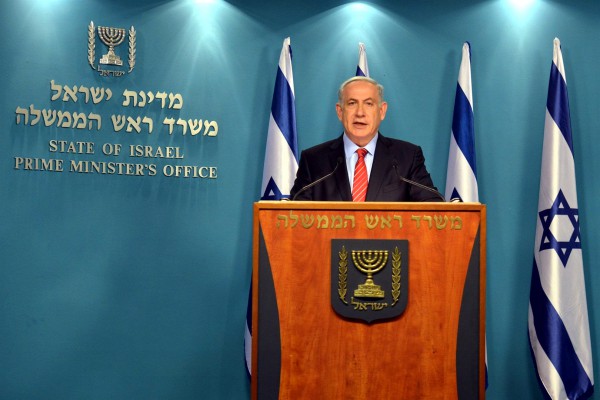“All who rage against you will surely be ashamed and disgraced; those who oppose you will be as nothing and perish.” (Isaiah 41:11)
On Thursday, Iran’s supreme leader, Ayatollah Ali Khamenei, said that the hard-won framework deal was no guarantee of success and that sanctions must lift when a final nuclear deal is signed. The US, however, plans to lift the sanctions in phases.
He also said there would be no inspections of military facilities.
“What has been done so far does not guarantee an agreement, nor its contents, nor even that the negotiations will continue to the end,” Khamenei stated.
“All sanctions should be removed just when the deal is reached. If sanctions removal depends on another process, then why did we start to talk?” Khamenei asked. He also suggested that negotiations be extended beyond the end of June if more time is needed to reach an agreement.
Khamenei’s sentiments were echoed by the Iranian president, Hassan Rouhani, who declared, “We will not sign any agreement unless all economic sanctions are totally lifted on the first day of the implementation of the deal.”
Rouhani made the comments during a ceremony for Iran’s nuclear technology day, which celebrates the country’s nuclear achievements.
In response to the comments, France Foreign Minister Laurent Fabius said a long road lay ahead to the nuclear deal.
“Subjects still remain that we aren’t agreed on, notably on economic sanctions, and the Supreme Leader has made statements that show there is still a lot of work to be done,” Fabius said. (Times of Israel)
The French are highly skeptical regarding the present agreement, noting that it allows for the use of the more advanced IR-2 and IR-4 centrifuges, actually reducing the breakout time needed for the construction of a bomb.
In addition, it allows the Iranians to continue work on the development of the advanced IR-5, IR-6 and IR-8 centrifuges, accelerating the breakout time even further.
There are also serious differences between the French and US documents; the US text is less specific with regard to centrifuge development or the level of inspections.
Israel is very critical of the present agreement, saying that it allows Tehran free reign to continue with its nuclear program, which Jerusalem sees as an existential threat.

On Sunday, Israeli Prime Minister Benjamin Netanyahu stated that Iran, the foremost sponsor of global terrorism, must not be given an easy path to nuclear weapons, which would threaten the entire world. (GPO photo by Kobi Gideon)
On Sunday, Israeli Prime Minister Benjamin Netanyahu stated, “In the last few days, Iran has shown again why it can’t be trusted.
“Iran insists on maintaining its formidable nuclear capabilities with which it could produce nuclear bombs. Iran insists on removing all sanctions immediately. And Iran refuses to allow effective inspections of all its suspect facilities. At the same time, Iran continues its unbridled aggression in the region and its terrorism throughout the world.”
Netanyahu has suggested that recognizing Israel’s right to exist be a part of the agreement with Iran.
US President Obama labeled Netanyahu’s request a “misjudgment,” saying that to ask Iran to recognize Israel would be like saying, “We won’t sign a deal unless the nature of the Iranian regime completely transforms.” (CBN)

In 2012, Prime Minister Benjamin Netanyahu addressed the sixty-seventh session of the General Assembly, drawing a red line for Iran’s capacity to build a nuclear bomb.
In an apparent swipe at Israeli Prime Minister Benjamin Netanyahu, the White House promoted the merits of the present agreement by using an identical diagram to the one PM Netanyahu displayed in his 2012 speech to the UN General Assembly. In that speech, the prime minister warned the world of the near breakout time for the creation of an Iranian nuclear bomb.
The new diagram, which compares the results of no agreement with the present one, was posted on the White House’s official website and its Twitter account.
According to the White House diagram, with the current deal there would be “no production or stockpile of highly enriched uranium; low-enriched uranium stockpile reduced by 98 percent and capped; centrifuges reduced by two-thirds.”
A separate diagram claimed that Iran’s production of a bomb would be effectively cut off by the agreement. It reads: “Highly enriched uranium at Natanz facility — blocked; Highly enriched uranium at Fordow facility — blocked; Weapons-grade plutonium — blocked; Covert attempts to produce fissile material — blocked.”












